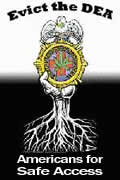By William U. McCormack
Special Agent
Legal Instructor
FBI Academy
Quantico, Virginia
Since 1968, the U.S. Supreme Court has recognized the
constitutional authority of law enforcement officers to
temporarily detain an individual on less than probable cause.
(1) Temporary detentions have become an important tool of law
enforcement in stopping the flow of illegal drugs into and
around the United States. A temporary detention based on
reasonable suspicion gives officers an opportunity to develop
probable cause through the use of a trained drug-sniffing dog,
further questioning of a suspect, and other investigative
efforts that may quickly confirm or dispel an officer’s
suspicion that the individual detained is a drug smuggler or
courier.
In the course of drug interdiction efforts, some law
enforcement agencies have developed lists of factors and
so-called drug courier profiles (2) to assist officers in
deciding whether to detain a suspect. Some of these factors and
profiles have been challenged on constitutional grounds when a
law enforcement officer employs them in detaining or stopping
travelers in bus and train stations, airport terminals, and on
the highways.
The purpose of this article is to alert law enforcement
officers to the constitutional requirement for reasonable
suspicion and to assist them in deciding whether reasonable
suspicion exists to detain a suspected drug courier. It
examines recent court decisions addressing whether police had
established reasonable suspicion to detain suspected drug
couriers and the extent to which drug courier profiles can be
used by police to establish reasonable suspicion. This article
then offers law enforcement officers some specific
recommendations regarding the types of facts and observed
behavior that can constitutionally be used to establish
reasonable suspicion for a temporary detention.
USEFULNESS OF PROFILES
In 1989, the U.S. Supreme Court decided United States v.
Sokolow, (3) a case involving the use of a drug courier profile
to detain an individual in an airport. In Sokolow, the Court
held that reasonable suspicion to detain a person must be based
on a totality of the circumstances and that the concept of
reasonable suspicion is not readily or even usefully reduced to
a neat set of legal rules. The Court reviewed the use of a drug
courier profile in Sokolow, but did not find that the use of a
profile either added to or detracted from the significance of
the factors relied upon to detain a suspected drug courier.
Rather, the Court found that based on a totality of the
circumstances, all of the factors taken together amounted to
reasonable suspicion to detain the defendant.
Factual Background of Sokolow
In Sokolow, a young man (the suspect) approached a ticket
agent at the Honolulu International Airport and requested two
round-trip tickets to Miami for a flight leaving later that day.
He was dressed in a black jumpsuit and was wearing gold jewelry.
The suspect, appearing nervous, told the ticket agent that the
tickets were for Andrew Kray and Janet Norian and paid for them
with $20 bills taken from a large roll of twenties. He and his
female companion did not check their four pieces of luggage when
they later boarded their flight.
After the ticket agent informed police about the cash
purchase of the tickets, an officer checked the phone number
given by the suspect and determined that it was not listed in
the name Andrew Kray. The officer then determined that the
suspect and his companion had reservations to return from Miami
to Honolulu just 3 days from the date of their departure.
Drug Enforcement Administration (DEA) Agents observed that
the suspect appeared nervous during his return flight to
Honolulu. Again, he had not checked any luggage and was dressed
exactly as when he left Honolulu. After getting off the plane,
the couple was detained by DEA Agents, who asked the suspect for
his ticket and identification. They were told that he did not
have them and that his name was Sokolow. Sokolow and his
companion were then escorted to the DEA office at the airport,
and shortly thereafter, a drug-sniffing dog alerted on Sokolow’s
brown shoulder bag, which was then searched pursuant to a search
warrant. After a second search warrant was later obtained,
1,063 grams of cocaine were found in a different bag.
The U.S. Court of Appeals for the Ninth Circuit reversed
Sokolow’s subsequent conviction on the grounds that there was
insufficient reasonable suspicion to detain him at the airport
and that this illegal detention tainted the subsequent search of
the bag. The U.S. Supreme Court reversed the Ninth Circuit and
held that under a totality of the circumstances, there were
sufficient facts known by the DEA Agents to justify Sokolow’s
detention.
Reasonable Suspicion Based on Totality of Circumstances
In analyzing the facts needed to detain a suspected drug
courier, the Supreme Court stated in Sokolow that an officer
must be able to articulate something more than an
unparticularized suspicion or hunch. The Court added that the
level of suspicion is considerably less than proof of wrongdoing
by a preponderance of the evidence and obviously less than that
needed for probable cause. (4) In finding that reasonable
suspicion existed based on a totality of the circumstances, the
Court stated that the primary facts the DEA Agents relied upon
to justify their stop were:
1) Sokolow paid $2,100 for two airplane tickets from a roll
of $20 bills;
2) He traveled under a name that did not match the name
under which his telephone number was listed;
3) His original destination was Miami, a source city for
illicit drugs;
4) He stayed in Miami for only 48 hours, even though a
round-trip flight from Honolulu to Miami takes 20 hours;
5) He appeared nervous during his trip; and
6) He checked none of his luggage. (5)
Judicial Disagreement–Probative Value of Profiles
The probative value of drug courier profiles was raised in
Sokolow because a DEA Agent testified during the suppression
hearing that Sokolow’s behavior "had all the classic aspects of
a drug courier." (6) In response, Sokolow argued that the DEA
Agents belief that his behavior was consistent with one of the
DEAs drug courier profiles should detract from the probative or
evidentiary significance of some of the profile factors the
Agent observed. The Court disagreed as follows:
"A court sitting to determine the existence of reasonable
suspicion must require the Agent to articulate the factors
leading to that conclusion, but the fact that these factors
may be set forth in a profile does not somehow detract from
their evidentiary significance as seen by a trained agent."
(7)
Illustrative of the judicial disagreement regarding the
probative value of profiles, the dissent in Sokolow analyzed the
use of drug courier profiles at greater length. They concluded
that a law enforcement officer’s mechanistic application of a
drug courier profile in deciding whom to detain can only dull
the officers ability and determination to make sensitive and
fact-specific decisions based on experience, particularly in
ambiguous or borderline cases. (8)
Sokolow suggests that drug courier profiles should not be
considered by officers as a panacea for establishing reasonable
suspicion to detain an individual. However, courts appear to
allow officers to use profiles as an investigative aid in
establishing reasonable suspicion to detain.
PROFILES AS INVESTIGATIVE AIDS
Sokolow makes it clear that law enforcement officers should
not rely exclusively on drug courier profiles or a magical
number of matching factors to establish reasonable suspicion to
detain a suspected drug courier. Nonetheless, profiles can be
particularly useful for a law enforcement officer who is
recently hired or transferred from a different assignment.
Officers who have extensive experience conducting drug
interdiction efforts in a particular airport or other public
facility or area are likely to gain valuable knowledge about
drug trafficking in that location. Putting that experience into
the format of a profile can be a useful way for experienced
officers to pass that knowledge and experience to another
officer. A profile based on such knowledge and prior experience
was viewed by one court as having the following investigative
and factual significance:
"Indeed, the use of a profile is simply a means by which
the law enforcement team communicates its collective
expertise and empirical experience to the officer in the
field and by which the officer, in turn, explains the
special significance of his observations to the court." (9)
Profiles can aid courtroom testimony by helping officers to
articulate the special significance of their observations. They
can give officers a structured means to articulate reasonable
suspicion based on personal experiences and a means to organize
knowledge received from other officers involved in previous drug
investigations. Moreover, officers who identify the typical
characteristics of drug couriers and then include those factors
in a profile may be able to make more informed decisions
regarding the existence of reasonable suspicion, since a profile
can serve as a written list of factors that officers can use in
making the decision whether to detain.
Probative Value of Observed Behavior
Since the legal basis for a temporary detention is simply
the presence or absence of reasonable suspicion based on a
totality of the circumstances, officers involved in such stops
should be aware of court decisions involving reasonable
suspicion decided in their jurisdiction. While each fact
pattern is different, there are common patterns in these court
decisions that can provide guidance to officers who must decide
whether reasonable suspicion exists to detain a suspected drug
courier temporarily.
Courts tend to divide facts officers may attempt to use to
establish reasonable suspicion into two general categories. The
first category includes facts that describe a large number of
innocent citizens, such as nervousness, destination or arrival
at a "drug source" or "drug reception" city, manner of attire,
time of travel, position among disembarking passengers, no
checked luggage, and extreme confidence, such as looking
straight ahead and walking fast.
The second category consists of facts indicative of illegal
activity, such as use of an alias or false name in travel,
furtive or evasive behavior after seeing law enforcement
officers, the unusual purchase of a ticket with cash, and the
receipt by police of information or an anonymous tip that a
particular person or type of person is a drug courier. Most
lower courts applying Sokolow’s totality of circumstances test
require police to have some facts indicative of illegal activity
before a temporary detention is deemed lawful.
Innocent citizens
Most courts hold that reasonable suspicion requires police
to have more than merely facts and circumstances that describe a
very large category of innocent citizens, such as no checked
luggage, last or first off an airplane, nervousness or extreme
confidence, early or late travel, flashy or grungy clothing, and
travel to or from a drug-source city. (10) In the context of
vehicle stops, facts in this category could include a young
person driving a late model sports car or a person driving
extremely cautiously on an interstate highway. (11) Such
otherwise innocent conduct is generally not sufficient to
establish reasonable suspicion to detain an individual. (12)
For example, the U.S.Court of Appeals for the Sixth Circuit
found insufficient facts to justify a temporary detention in
United States v. Taylor. (13) In that case, the defendant
arrived in Memphis on a plane from Miami, Florida. His
detention was based on the following factors:
1) Arrival from a drug-source city;
2) Walking away from the gate nervously and hurriedly
moving faster than the other passengers;
3) Constantly looking backwards while walking;
4) Carrying a tote bag held tightly to his body; and
5) Leaving the terminal walking very fast. (14)
The court also disapproved of the stop on the grounds that
the officers involved in the detention had little experience in
identifying drug couriers. Also, testimony at the suppression
hearing indicated that the defendant’s race and grungy clothing
may have been impermissibly considered by the officers in their
decision to detain. (15)
Facts indicative of illegal activity
Most courts hold that reasonable suspicion to detain
requires factors or facts indicative or probative of illegal
drug trafficking, such as the use of a false name, (16) the
unusual purchase of a ticket with cash, (17) and furtive or
unusual behavior after seeing law enforcement officers. (18) In
the context of vehicle stops, courts have found reasonable
suspicion where officers observed evidence associated with drug
trafficking, such as seeing a beeper and papers with telephone
numbers in a car or seeing a car with a large trunk with the
items normally kept in the trunk on the back seat. (19)
Information that Tips the Scale
Highly probative in determining reasonable suspicion is the
receipt by law enforcement of information or a tip that a
particular person or type of person is a drug courier. (20) For
example, in United States v. Condolee, (21) the U.S. Court of
Appeals for the Eighth Circuit upheld a temporary detention of a
stylishly dressed black woman at the Kansas City International
Airport based on the following factors:
1) The DEA Agent involved in the stop had 17 years’
experience with substantial experience in drug trafficking
investigations;
2) The defendant arrived early in the morning from Los
Angeles, a source city especially for early courier
dispatch;
3) The Agent involved had received a tip that two Los
Angeles street gangs were using "sharply dressed black
female couriers" to smuggle drugs through the Kansas City
airport;
4) The defendant was traveling only with carry-on luggage
and walked quickly and directly, while looking straight
ahead; and
5) Prior to the actual temporary detention when the
defendant was talking to DEA Agents, she appeared nervous
and attempted to conceal the contents of her purse, which
made a loud thud when placed on a trash can. (22)
Anonymous Tips and Corroboration
The U.S. Supreme Court recently held in Alabama v. White
(23) that an anonymous tip when sufficiently corroborated can
provide reasonable suspicion to detain an individual. In that
case, police received an anonymous tip that the defendant would
be leaving a particular apartment at a particular time in a
brown Plymouth station wagon with the right taillight lens
broken; that she would be going to a certain motel; and that she
would be in possession of about an ounce of cocaine inside a
brown attache case. Police went to the apartment, saw the
defendant leave and enter the station wagon, and stopped her
just short of the motel to which the tipster had predicted she
would drive.
In approving the stop, the Court described the reasonable
suspicion standard as follows:
"Reasonable suspicion is a less demanding standard than
probable cause not only in the sense that reasonable
suspicion can be established with information that is
different in quantity or content than that required to
establish probable cause, but also in the sense that
reasonable suspicion can arise from information that is
less reliable than that required to show probable cause."
(24)
Thus, informant information or anonymous tips not reliable
enough to provide probable cause may provide the justification
for a temporary detention, especially when corroborated by
observed behavior that has probative value in determining
reasonable suspicion.(25)
SUMMARY
In order to stop and detain someone under the fourth
amendment, the U.S. Constitution requires that a law enforcement
officer justify the stop on something more than a mere suspicion
or hunch. The stop must be based on an articulable and
reasonable suspicion that criminal activity is afoot.
In developing and articulating reasonable suspicion, a
profile can be a useful tool in categorizing and attaching
particular significance to otherwise innocent behavior.
However, each decision to detain an individual must be judged on
the individual facts available to an officer at the time of the
stop, viewed in light of the officer’s training and experience.
Officers are encouraged to gather and evaluate as many
facts as possible because the validity of a detention is
determined by a totality of the circumstances test. Under this
test, most courts attach particular significance to certain
factors, such as the use of a false name, the unusual purchase
of a ticket with cash, unusual furtive or evasive behavior, and
the existence of informant information or a tip that a
particular person or particular type of person is likely to be a
drug courier.
FOOTNOTES
(1) Terry v. Ohio, 392 U.S. 1 (1968). See also, John C.
Hall, "Investigative Detention: An Intermediate Response," FBI
Law Enforcement Bulletin, November and December 1985 and January
1986; Jerome O. Campane, "Investigative Detention and the Drug
Courier: Recent Supreme Court Decisions," FBI Law Enforcement
Bulletin, November 1983.
(2) Drug courier profiles are typically developed by law
enforcement officers who work in a particular area. Because the
factors in one area may vary significantly from other areas, it
may be difficult to determine significant factors nationwide.
(3) 109 S.Ct. 1581 (1989).
(4) Id. at 1585.
(5) Id. at 1583.
(6) Id. at 1587, n. 6.
(7) Id. at 1587.
(8) Id. at 1588.
(9) Derricot v. State, 578 A.2d 791 (Md. App. 1990).
(10) In Reid v. Georgia, 448 U.S. 438 (1980) (per curiam),
the petitioner arrived from Fort Lauderdale early in the
morning, appeared to conceal the fact that he was traveling with
a companion and had not checked luggage. The Court found these
facts insufficient to justify a temporary detention.
(11) See, e.g., State v. Johnson, 561 So.2d 1139 (Fla.
1990) (late model car being driven cautiously at 4:15 a.m. by
30-year-old male on I-95 not sufficient reasonable suspicion to
justify stop of car on suspicion of drug trafficking); Snow v.
State, 578 A.2d 816 (Md. App. 1990) (avoidance of eye contact by
nervous driver stopped on I-95, the presence of several air
fresheners, and driver’s refusal to consent to search did not
give reasonable suspicion to detain for drug trafficking; United
States v. Hernandez-Alvarado, 891 F.2d 1414 (9th Cir. 1989) (no
reasonable suspicion to stop when agent observed car bought from
dealership associated with drug dealers, two-way antenna
protruding from large trunk, driver driving cautiously, and car
registered in a neighborhood known as a high drug smuggling
area); and United States v. Tapia, 912 F.2d 1367 (11th Cir.
1990) (no reasonable suspicion to detain a motorist for drug
smuggling when officer observed nervous Hispanic individual in
car with out-of-State license allegedly traveling out of State
to look for work with no visible signs of luggage. Court stated
that these characteristics could plausibly describe the behavior
of a large portion of the motorists engaged in travel on our
interstate highways). See also, John Sauls, "Traffic Stops:
Police Powers Under the Fourth Amendment," FBI Law Enforcement
Bulletin, October 1989.
(12) See, e.g., United States v. Millan, 912 F.2d 1014
(8th Cir. 1990) (reasonable suspicion to detain traveler in an
airport not present when DEA Agents knew defendant had arrived
on an early flight from San Francisco to Kansas City, was one of
the first passengers to deplane, carried a garment bag and had
not checked luggage, dressed casually, wore a gold chain and had
long hair, had purchased a one-way ticket costing $179 with
cash, was not traveling under an assumed name, could not
remember the address or telephone number of the person allegedly
visited, and had something evenly shaped in the pockets of his
jacket).
(13) 917 F.2d 1402 (6th Cir. 1990).
(14) Id. at 1408.
(15) Id. at 1409.
(16) Florida v. Royer, 460 U.S. 491 (1983) and United
States v. Tavolacci, 895 F.2d 1423 (D.C. Cir., 1990).
(17) United States v. Colyer, 878 F.2d 469 (D.C. Cir.
1989) and United States v. Sterling, 909 F.2d 1078 (7th Cir.
1990).
(18) See, e.g., Florida v. Rodriguez, 469 U.S. 1 (1984)
(suspects glancing over shoulders and overheard saying, "Let’s
get out of here."); United States v. Sullivan, 903 F.2d 1093
(7th Cir. 1990) (detention of train traveler’s luggage upheld
based on travel from Los Angeles, a source city, one-way ticket
purchased with cash on date of departure, defendant only carrying
one small bag and appeared to divert eyes from police officers
when followed by them, and appeared to pretend to make a
telephone call without actually placing any money in a public
phone); United States v. Hayes, 825 F.2d 32 (4th Cir. 1987) (the
fact that defendants were traveling from a source city and
appeared nervous not sufficient for reasonable suspicion, but
when the defendants took flight after police identified
themselves, detention based on reasonable suspicion then
justified).
(19) See, Derricot v. State, 578 A.2d 791 (Md. App. 1990)
(flashy vehicle and dress of young driver, as well as possession
of paging device and papers bearing telephone numbers, gave
reasonable suspicion to detain for drug trafficking); Cresswell
v. State, 564 So.2d 480 (Fla. 1990) (nervous driver on I-95 in
car with large trunk driving car registered to someone else, CB
in car, ignition key separate from other keys, and items
normally kept in trunk on back seat provided reasonable
suspicion to justify detention of driver for drug trafficking).
(20) See, e.g., United States v. Malone, 886 F.2d 1162
(9th Cir. 1989) (stop in airport justified, in part, on
defendant fitting a "gang member" profile based on knowledge of
DEA Agents concerning Los Angeles street gang members
transporting drugs into Seattle. Also, defendant glanced around
terminal furtively, carried only a plastic shoe bag for a 3-day
stay, had no identification, could not name anyone in Seattle to
verify identity, and could not explain presence in the city).
(21) 915 F.2d 1206 (8th Cir. 1990).
(22) Id. at 1210.
(23) 110 S.Ct. 2412 (1990).
(24) Id. at 2416.
(25) See, e.g., United States v. Lane, 909 F.2d 895 (6th Cir.
1990) (informants tip added to the totality of the circumstances
justifying detention of defendant for drug possession).



 Button Ads!
Button Ads! 




